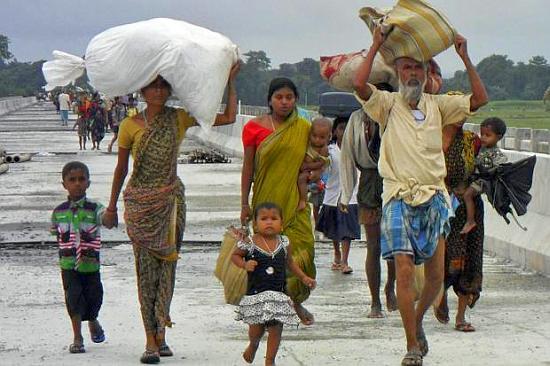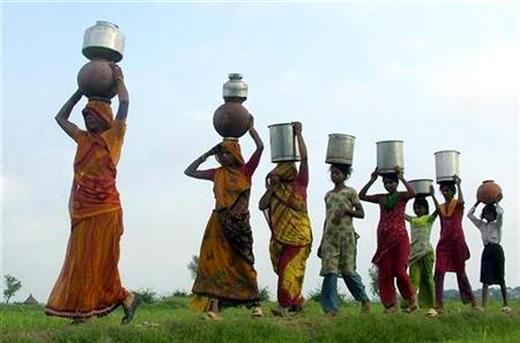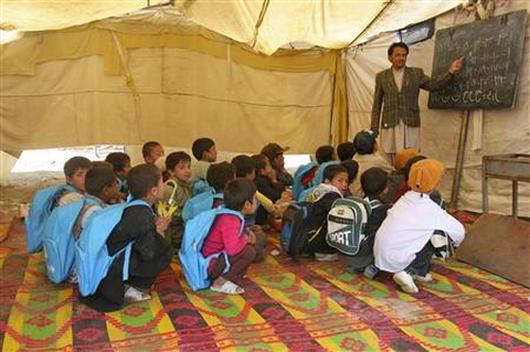 | « Back to article | Print this article |
Tribal dreams, Budget realities
As the finance minister will be scrutinising his accounts book to reduce India's rising fiscal deficit, a tenfold increase in the plan outlay for the tribal affairs ministry since the beginning of the United Progressive Alliance (UPA)-I government is surely going to catch his eye.
A quick glance at the plan outlay shows that during the end of the National Democratic Alliance (NDA) regime, the amount allocated to the tribal affairs ministry was Rs 250 crore (Rs 2.5 billion) compared to Rs 2,517 crore (Rs 25.17 billion) in 2012-13.
The UPA government certainly seems to have outspent the NDA by ramping up the government's expenditure on projects, schemes and programmes for tribal welfare, but the marginal improvement of the scheduled tribes (STs) in almost all the human development indicators suggests that they have been left behind in India's paradoxical growth story.
A closer look at the data on STs of Madhya Pradesh, which is home to the largest ST population in the country, reveals that the tribals continue to be deprived of basic facilities like sanitation, drinking water, education and crucial health care services, thus leading to high rates of malnutrition, mortality and economic misery.
Click NEXT to read more...
Complete coverage: Union Budget 2013-14
Budget Impact Live!
Tribal dreams, Budget realities
According to one government data, 91 per cent tribals in Madhya Pradesh defecate in the open.
In five districts, which have more 50 per cent ST population, almost 96 per cent of them defecate in the open. Only 5 per cent of the ST population has access to treated drinking water.
The Human Development Report 2011 noted, "The performance of health indicators in Madhya Pradesh is really poor in comparison to the all-India average. The situation is worse for SCs [scheduled castes] and STs."
The mortality rate under five years in the ST community is 140 per 1,000 compared to the national average of 95.
The percentage of underweight children between zero and five years among STs is 71 per cent compared to the national average of 42 per cent. Half of the ST women in the state are undernourished.
The Census data reveals that the Gond is one of the largest ST communities of India with major concentration in Madhya Pradesh and Chhattisgarh, and in pockets of eastern Maharashtra, northern Andhra Pradesh and eastern Odisha.
The Gond population in these states is 12 million with more than two-third residing in Madhya Pradesh and Chhattisgarh.
Traditionally, the Gond community was mostly engaged in agriculture, following the practice of shifting cultivation and settlements by temporarily vacating the fallow land till it became fertile.
Click NEXT to read more...
Complete coverage: Union Budget 2013-14
Budget Impact Live!
Tribal dreams, Budget realities
However, with the introduction of the jagirdari system, tribal communities were gradually alienated from their land and the Gonds could not escape that either.
Their temporarily vacated and unprotected areas were gradually snatched away by outsiders, who even managed to obtain title deeds of the land.
After Independence, our governments have been making futile efforts to improve the living conditions of the tribals.
Jawaharlal Nehru studied the tribal problems in detail and came up with his five-point ideas, later known as Nehru's panchsheel points. These points for tribal development have been the cornerstone of the Indian government's tribal policy.
The historic Forest Right Act, 2006 passed by the UPA government brought some relief to the tribals and other forest-dwellers, since it granted legal recognition by giving them rights of land, minor forest produce, community resources, and so on.
According to the tribal affairs ministry, till November 2012, 1.3 million land title claims have been settled with 4.6 million acres distributed to the tribal community under the Forest Act.
However, this Act continues to face implementation problems owing to the lack of awareness among its beneficiaries and the implementation agencies.
Additionally, high rejection rate of the claims for rights continues to hinder the popularity of this scheme.
Click NEXT to read more...
Complete coverage: Union Budget 2013-14
Budget Impact Live!
Tribal dreams, Budget realities
One way to enhance the delivery penetration of government programmes is to introduce schemes demanded by and personalised to the tribal communities.
For example, the education guarantee scheme (EGS) started by the Madhya Pradesh government in 1997 was an innovative programme to start a primary school based on the demand and participation of local communities.
The state government, through the EGS programme, guaranteed providing a school within 90 days of receiving a written request from the local panchayat.
This model was acknowledged as a breakthrough in social sector planning, since after its introduction, the state recorded a sharp increase in its gross enrolment ratio and growth rate for literacy among SC and ST communities.
Second, accessibility of more vocational courses in tribal areas, empowering the tribals to be equipped with knowledge in running a small-scale industry, will keep them employed closer to their community, and will improve their living standards.
Even after 65 years of India's freedom, most aboriginal groups are lost in the woods dreaming for a ray of hope.
Anurodh Lalit Jain is a social health care analyst and has worked on social welfare programmes internationally. Hira Singh Markam is associated with the Gondwana Samagra Kranti Andolan




